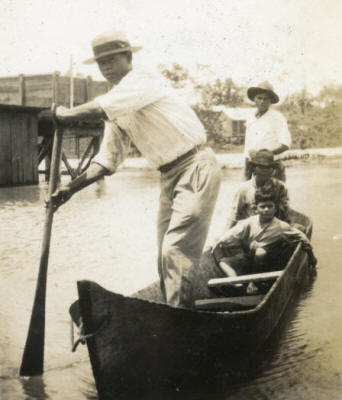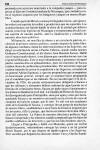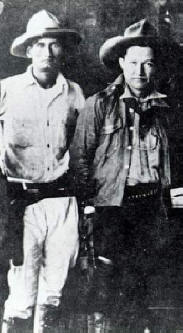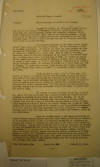 THIS IS PAGE 11 OF THE
EAST COAST DOCUMENTARY ANNEX.
It examines
five different versions of how, exactly,
Sandino's small band of Liberal revolutionists acquired
arms on the Coast in January 1927 at the height of the
1926-27 Civil War, and who helped them.
THIS IS PAGE 11 OF THE
EAST COAST DOCUMENTARY ANNEX.
It examines
five different versions of how, exactly,
Sandino's small band of Liberal revolutionists acquired
arms on the Coast in January 1927 at the height of the
1926-27 Civil War, and who helped them.
The first two accounts were
written & signed in press releases
by Sandino in 1929 and 1932,
respectively. The third
Sandino narrated to the Nicaraguan
journalist José Román in March
1933, who published the interview 50
years later in his now-classic
Maldito país (1983). The
fourth was narrated by old-time
Sandinista Santos López in 1976, and
the fifth comes from a report by the
US Military Attaché in Costa Rica in
January 1928, based on information
gleaned from an anonymous informant.
In
what follows I first quote,
summarize & critically analyze each
version. I then offer a
imaginative reconstruction of what I
think probably actually happened,
judging from this fragmentary &
conflicting evidence, before
concluding with some brief
reflections on the relationship
between "history" and "myth".
VERSION #1. “La Guerra
Constitucionalista” (18 March 1929,
PV1: 82-84).
 "...
El 24 de diciembre de 1926, los
yankees declararon Zona Neutral
Puerto Cabezas, ordenando al Doctor
Sacasa la evacuación del Puerto en
el término de cuarenta y ocho horas
por todo el Ejército
Constitucionalista y el retiro de
elementos bélicos nicaragüenses que
allí hubiera. ¶ Al
recibir la grosera intimación
procedieron a desocupar aquella
plaza los constitucionalistas, en el
escaso tiempo de la intimación.
¶ No pudiendo llevar todos los
elementos bélicos almacenados alli,
gran cantidad de ellos fue arrojada
al mar por los yankees. La
desesperante humillación dio lugar a
que las fuerzas de Sacasa dejaran
abandonados cuarenta rifles y siete
mil cartuchos sobre la raya de costa
entre Puerto Cabezas y Prinzapolka.
¶ Mis seis ayudantes y yo no
quisimos dar un paso sin llevar con
nosotros los elementos abandonados.
¶ Con la ayuda de algunos
nativos de La Mosquitia
transportamos por tierra a
Prinzapolka aquellas armas y el
parque. ..."
"...
El 24 de diciembre de 1926, los
yankees declararon Zona Neutral
Puerto Cabezas, ordenando al Doctor
Sacasa la evacuación del Puerto en
el término de cuarenta y ocho horas
por todo el Ejército
Constitucionalista y el retiro de
elementos bélicos nicaragüenses que
allí hubiera. ¶ Al
recibir la grosera intimación
procedieron a desocupar aquella
plaza los constitucionalistas, en el
escaso tiempo de la intimación.
¶ No pudiendo llevar todos los
elementos bélicos almacenados alli,
gran cantidad de ellos fue arrojada
al mar por los yankees. La
desesperante humillación dio lugar a
que las fuerzas de Sacasa dejaran
abandonados cuarenta rifles y siete
mil cartuchos sobre la raya de costa
entre Puerto Cabezas y Prinzapolka.
¶ Mis seis ayudantes y yo no
quisimos dar un paso sin llevar con
nosotros los elementos abandonados.
¶ Con la ayuda de algunos
nativos de La Mosquitia
transportamos por tierra a
Prinzapolka aquellas armas y el
parque. ..."
Several aspects
of this important narrative
merit attention.
First, note
that this it does not say
that Sandino’s forces got their
rifles & bullets from the sea.
Nor does it say anything about
anyone helping his small force
acquire the 40 rifles and 7,000
bullets. Let us look at what
it does say.
It says
that
the Yankees threw a "great quantity"
of the Constitutionalists’
confiscated arms into the sea near
Puerto Cabezas. It then goes
on to say that after being expelled
from Puerto Cabezas by the Yankees,
Sacasa’s forces "in desperate
humiliation" abandoned 40 rifles and
7,000 bullets “along the coastline”
(sobre la raya de costa)
between Puerto Cabezas &
Prinzapolka. These were the
arms Sandino says his small band
retrieved: not from
the sea, but presumably from the
"coastline". Note his language
here: "humiliated" is a highly
charged & coded term, deeply
imbricated with cultural
constructions of honor & shame and
discourses of gender & sexuality.
In this narrative, Sacasa’s retreat
shamed & emasculated his troops so
completely that they simply
abandoned their weapons along the
coastline as they retreated.
Then Sandino and his heroic band
came along and found them.
Here Sandino's acquisition of arms
becomes a kind of morality tale:
in the face of brutal Yankee
aggression, Sacasa retreats & thus
loses his honor and his claim to
virile manhood. Sandino, in
contrast, becomes the heroic,
resourceful, aggressive, and
determined bearer of Sacasa’s
surrendered virility & manhood.
The episode on Sacasa abandoning the
arms along the coast thus occupies a
key position in this narrative as a
pivotal moment in a larger morality
tale. The account goes on to
say that after these arms were
acquired, "some natives of the
Mosquito Coast" helped to transport
them by land to Prinzapolka – away
from Puerto Cabezas. If these
were Miskitu Indians, they seem to
have been enlisted as overland
porters.
This is
the version that has
inspired various fictional accounts
& artistic renderings, including the
wonderfully imaginative
magical-realist story by Stephen
Duplantier in the December 2011
issue of the online zine
Neotropica and its mildly
eroticized portrayal of the event in
the image below:
.jpg)
Image via the kind courtesy of
Stephen Duplantier, "The General &
the Mermaid," in the online zine
Neotropica, issue no. 3,
December 2011, at
http://issuu.com/stephanz/docs/neotropica3/125
(offsite)
 VERSION
#2. “Para la historia de Nicaragua”
(4 August 1932, PV2: 238).
VERSION
#2. “Para la historia de Nicaragua”
(4 August 1932, PV2: 238).
"... Yo salí con seis ayudantes
atrás de la Guardia de Sacasa, y
conmigo iba un grupo de muchachas de
amores libres, ayudandonos a sacar
hasta la distancia impuesta por los
invasores, rifles y parque, que
fueron en número de treinta rifles y
seite mil cartuchos. ..."
This version
largely corresponds to the first:
Sandino & six lieutenants follow
behind Sacasa in the latter’s
retreat from Puerto Cabezas, but
this time accompanied by "a group of
young women of free love" who "until
the distance imposed by the
invaders," find and take the 30
rifles and 7,000 bullets.
There is nothing about getting the
weapons from the sea here, either.
Note the date: 4 August 1932
is two months before Sacasa is
widely expected to become
president in the elections slated
for November. Sandino, ever
the shrewd political actor, was
probably looking to foster a
positive environment for the
upcoming negotiations with
soon-to-be President Sacasa,
transforming the story from a
morality tale deriding Sacasa's
cowardice into a mildly
salacious hero & adventure story.
Why? Perhaps because young
women "de amores libres"
from around Puerto Cabezas did in
fact help his band acquire the arms.
And, perhaps, because he was in a
truth-telling mood at the time –
with the forty rifles shrinking to
thirty.
 VERSION
#3: José Román, Maldito
país (Managua, 2007), 88-89.
VERSION
#3: José Román, Maldito
país (Managua, 2007), 88-89.
"... Moncada me negó las armas
que tanto necesitamos. Como los
norteamericanos declararan a Puerto
Cabezas ‘Zona Neutral,’ el Gobierno
de Sacasa tuvo que moverse a
Prinzapolka. En Puerto Cabezas
quedaron rifles y ametralladoras
escondidas para que no los
capturaran los marinos. Estas armas
me fueron ‘entregadas’ secretamente
por unas prostitutas de esa ciudad
que sabían donde estaban escondidas
y por suerte eran segovianas. Con
mis ayudantes y ese grupo de
segovianas de la vida pública,
logramos sacar los rifles, dos
ametralladoras y poco más de 37,000
cartuchos. Todo nuevo. Esto además
de unos pocos rifles viejos y
quebrados que nos dieron los del
Gobierno y de los cuales apenas uno
que otro sirvió. ¶ Bueno, en total
permanecí cuarenta días en la Costa
Atlántica. ..."
Note that in this
version, an unknown
quantity of rifles, machine guns &
ammunition lie hidden somewhere
inside Puerto Cabezas, so that the
Marines cannot seize them.
With the help of a group of young
Segovian prostitutes, these arms are
secretly delivered to Sandino:
an unknown number of rifles, 2
machine guns, and now a little more
than 37,000 bullets. I would
argue that this latter claim of
37,000 bullets, vastly inflated from
7,000 in Versions #1 and #2, as well
as the addition of two machine guns,
actually lends additional
credibility to Román's account.
As seen throughout his writings,
Sandino routinely & prodigiously
inflated figures of various kinds
(e.g., see the Battle of El
Bramadero,
PC-DOCS 28.03.01).
Vastly inflating numbers to make his
troops look stronger & more powerful
& successful than they actually were
is entirely consistent with the
Supreme Chief’s routine practice.
One can readily imagine Sandino in
early 1933, recounting an episode
six years earlier, and adding 30,000
to the original number of bullets,
as well as two machine guns atop the
rifles.
Note also that in
Version #3 these young
women are described not once but
twice, the second time by the
noteworthy phrase, "segovianas
de la vida pública". In
Nicaraguan political culture,
"public space" is generally
conceived as male-dominated space,
while "private space" — the space of the home —
is widely considered female-dominated. Sandino thus
rhetorically masculinizes these
Segovian prostitutes, who, by virtue
of their heroic actions, were
discursively transformed into
the cultural equivalent of males.
This double referent in
José Román’s account makes
a total of three specific references
by Sandino regarding the individuals
who helped his band acquire the
arms:
(1)
Version #2:
"muchachas de amores
libres"
(2)
Version #3: "prostitutas
[que] eran segovianas"
(3)
Version #3: "segovianas
de la vida pública"
Version #3
also dispenses with the morality
tale about Sacasa’s humiliation
causing his troops to abandon their
arms somewhere along the coastline
between Puerto Cabezas &
Prinzapolka. Instead it offers
a more plausible scenario:
that some Liberals hid their arms
inside Puerto Cabezas to keep them
from the Marines, and that some
transplanted young Segovian
prostitutes in the city knew where
these arms were hidden & helped
Sandino and his men retrieve them.
José Román’s thus seems to me the
most credible of the three versions.
It is the most specific, detailed,
and plausible, and is also
consistent with Version #2's
description of the "young women of
free love".
Some might object
that Román’s account was
not published for 50 years and that
parts of his narrative likely suffer
from inaccuracies & flawed memories.
If this is the argument against this
passage, then the only logical
response is to throw out the whole
of Román’s book, for there is no way
to determine definitively which
parts are credible and which are
not. There is no reason to
think that Román got it wrong here,
unless one thinks he got it wrong
everywhere. The passage is
wholly consistent in tone & content
with everything else in Maldito
país and seems to me entirely
plausible & credible.
There is a fourth
version, narrated by Col.
Santos López in his Memorias de
un soldado, published by the
Frente Estudiantil Revolucionario
(FER) in 1976 during the struggle
against the Somoza dictatorship,
which reads as follows:
VERSION #4: Santos
López, Memorias (FER,
Managua, 1976), p. 2.
 "Hace
el viaje en un pipante guiado por
indios con su propio dialect que
vivían en el Coco, llegando
finalmente a Puerto Cabezas después
de 8 días de navegación; aquí se
encuentra con las tropas de Moncada,
General en Jefe de los ejércitos que
iban a luchar por el derrocamiento
de Adolfo Díaz; y sostuvo
conversaciones con Moncada,
ofreciéndole Sandino ponerse bajo
sus órdenes y luchar en Las Segovias
en una sola causa común,
encontrándose con que Moncada ya
había armado las tropas y las había
dirigido hacia la Laguna de Perlas y
Chontales, negándole toda ayuda a
él, teniendo Moncada todavía armas
en su poder y posibilidades para
ayudarle; desfiló Moncada con sus
tropas quedando Sandino en Puerto
Cabezas; allí Sandino se enteró que
los conservadores habían tirado una
cantidad de armas al muelle. El,
entonces, decide sacarlas cooperando
en esta operación el pueblo,
logrando rescatar 47 rifles, deja
Puerto Cabezas y se encamina aguas
arriba del Coco, con los 17
compañeros, agregándosele 45
compañeros más; . . ."
(Right:
photo of Sandino & Santos López,
Feb. 1934)
"Hace
el viaje en un pipante guiado por
indios con su propio dialect que
vivían en el Coco, llegando
finalmente a Puerto Cabezas después
de 8 días de navegación; aquí se
encuentra con las tropas de Moncada,
General en Jefe de los ejércitos que
iban a luchar por el derrocamiento
de Adolfo Díaz; y sostuvo
conversaciones con Moncada,
ofreciéndole Sandino ponerse bajo
sus órdenes y luchar en Las Segovias
en una sola causa común,
encontrándose con que Moncada ya
había armado las tropas y las había
dirigido hacia la Laguna de Perlas y
Chontales, negándole toda ayuda a
él, teniendo Moncada todavía armas
en su poder y posibilidades para
ayudarle; desfiló Moncada con sus
tropas quedando Sandino en Puerto
Cabezas; allí Sandino se enteró que
los conservadores habían tirado una
cantidad de armas al muelle. El,
entonces, decide sacarlas cooperando
en esta operación el pueblo,
logrando rescatar 47 rifles, deja
Puerto Cabezas y se encamina aguas
arriba del Coco, con los 17
compañeros, agregándosele 45
compañeros más; . . ."
(Right:
photo of Sandino & Santos López,
Feb. 1934)
In Santos López's
telling, it is the
Conservatives who throw their
weapons off the dock (muelle)
in Puerto Cabezas, after which
Sandino's forces retrieve them "with
the cooperation of the people" of
the city. A key part of
López's version, however, does not
make sense: since the
Conservatives were supported by the
USA, there was no reason for them to
dispose of their weapons in this
fashion. This seems a
composite of various versions Santos
López had heard about second-hand.
 VERSION #5:
Anonymous Informant to US Military
Attaché, Costa Rica, Jan. 1928.
VERSION #5:
Anonymous Informant to US Military
Attaché, Costa Rica, Jan. 1928.
" ... Upon the establishment of the Sacasa
government at Puerto Cabezas Sandino
appears upon the scene there,
offering his services. It is
understood that at that time General
Moncada had no confidence in Sandino
and refused to furnish him with guns
at the time of the battle of Pearl
Lagoon. Sandino kept insisting
that he and his followers be
furnished arms and ammunition and
finally obtained an order for forty
rifles and ammunition, to be turned
over to him at Cabo Gracias a Dios.
However, after the battle of Pearl
Lagoon Sandino had already picked up
a certain number of rifles and
ammunition which were left behind by
the forces of General Rivers
Delgadillo and armed with these
rifles he and his followers
proceeded to the mouth of the
Segovia river, near the Horduras
frontier and commenced his march
inland. . . ."
In
this version, synopsized by
the US Military Attaché from a
conversation he had with someone who
obviously had quite a bit of
detailed inside information about
Sandino’s early life and his rise to
military prominence, Sandino is
initially rebuffed by Moncada but
"finally obtained an order"
(presumably from Moncada) for 40
rifles and ammunition, though it
remains unclear in this narrative
whether he actually received those
weapons. The arms he does
acquire were taken from those
abandoned by the forces of
Conservative General Rivers
Delgadillo after the Battle of Pearl
Lagoon, and he brings these rifles &
bullets back up the Río Coco to Las
Segovias. (For the document
collection from which this report is
taken, see the
TOP 100 PAGE 95, PAGE 4,
document nos. 36-37; for photographs
of Gen. Rivers Delgadillo, see Major
Bloor's Report in the
TOP 100, PAGE 99.)
Given these five different versions,
the following seems to me the
likeliest scenario of actually
happened:
A week or so
after the Marines declare Puerto
Cabezas a neutral zone on 24
December 1926, Sandino and his small
group of Liberal revolutionists
sneak into the city. By
chance, or because one or more of
his men seek out the services of
prostitutes, or because one of them
is already acquainted with one of
the women, Sandino’s small band is
befriended by a group of young
Segovian sex-workers, who tell them
about a small cache of arms hidden
inside the city. Sandino’s men
follow up on the lead, acquire the rifles & bullets,
sneak out of the city &
bring them back up the Río Coco to Las
Segovias.
There is no way to
prove this, of course, and
the fact is we'll never really know.
But given what we do know,
this seems the likeliest sequence of
events.
On the
other hand, this episode
has gone beyond the confines of
“History” to enter the realm of
“Mythstory” – an iconic moment
around which has congealed &
crystallized multiple layers of
meaning, symbolism & belief.
In important ways, it
matters less “what actually
happened” in Puerto Cabezas in
January 1927 than what people
today understand & believe happened
there.
Artists, writers, poets &
songwriters will doubtless continue
to create works of art that express
not simply “what happened” but the
layers of meaning & symbolism that
undergird the image of Sandino & the
“young women of free love” heroically
retrieving discarded arms from the
depths of the sea to fight the
despised Yankee aggressors.
The rigors of the
historian's craft, in
short, have their limits — much like
the discipline of History itself —
and at a certain point the historian
must surrender such
iconic episodes to the poets &
mythmakers.
BACK TO EAST COAST DOCS 1927, PAGE 2

